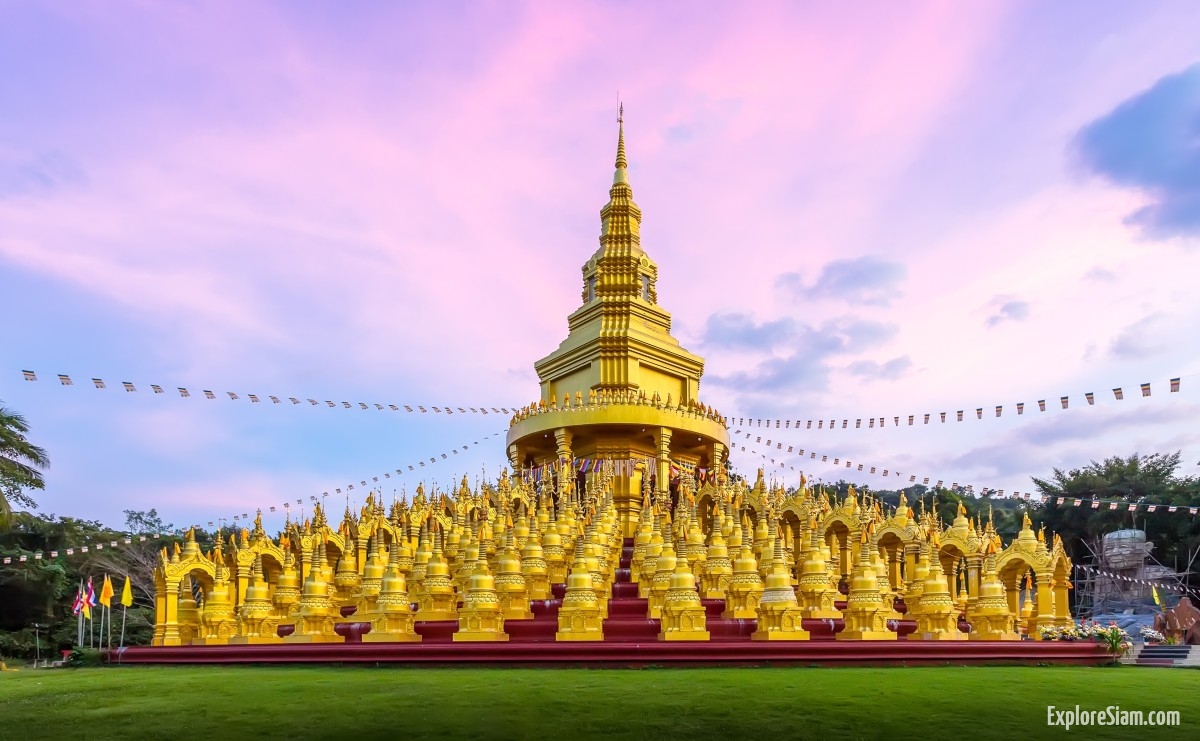In the rich tapestry of Thailand’s cultural and religious heritage, pagodas and stupas stand out as significant structures that embody the country’s deep-rooted Buddhist traditions. These architectural marvels are not merely decorative; they serve profound spiritual purposes and are imbued with symbolism and meaning. Understanding the differences and purposes of pagodas and stupas in Thailand offers a glimpse into the spiritual life and artistic expression that define Thai culture.
Pagodas in Thailand, often referred to as “chedis,” are tall, multi-tiered structures that reach towards the sky, symbolizing the connection between the earthly realm and the heavens. They are commonly found within temple complexes and serve as focal points for worship and meditation. The design of pagodas is heavily influenced by ancient Indian stupas, yet they have evolved uniquely in Thailand, incorporating local architectural styles and artistic elements. Pagodas are typically adorned with intricate carvings, golden spires, and glazed tiles that reflect sunlight, creating a mesmerizing sight that attracts both devotees and tourists alike.
The primary purpose of pagodas is to house sacred relics, often believed to be the remains or possessions of the Buddha or revered monks. These relics are enshrined within the pagoda, making it a sacred site for pilgrimage and offering. Devotees circumambulate the pagoda, walking clockwise in a meditative practice that honors the Buddha and seeks spiritual merit. The presence of a pagoda within a temple complex also signifies the importance of that site, drawing visitors who wish to connect with the divine and seek blessings.
Stupas, on the other hand, are dome-shaped structures that also hold significant religious value. In Thailand, stupas are often referred to as “phra thaat.” The design of stupas is more simplistic compared to the ornate pagodas, yet they hold profound spiritual symbolism. The dome shape of the stupa represents the Buddha seated in meditation, the base symbolizes his crossed legs, the middle portion his body, and the top spire his head. This design serves as a physical representation of the Buddha’s enlightenment and his journey to Nirvana.
The primary function of stupas is similar to that of pagodas, as they are built to enshrine sacred relics. However, stupas also serve as memorials for significant events in the life of the Buddha or for notable monks. They are places of contemplation and reflection, where devotees can meditate and connect with the teachings of Buddhism. The simplicity of the stupa’s design is a reminder of the Buddha’s teachings on the impermanence of material life and the importance of spiritual pursuits.
While pagodas and stupas share the common purpose of enshrining relics and serving as sites of worship, their architectural distinctions reflect different aspects of Buddhist philosophy and artistic expression. Pagodas, with their towering presence and elaborate decoration, symbolize the reach towards enlightenment and the glory of the Buddhist faith. They are often the centerpiece of temple complexes, drawing the eye upwards and inspiring awe and reverence.
Stupas, with their serene and simple design, embody the meditative and introspective aspects of Buddhism. They are often less prominent than pagodas but hold equal spiritual significance. Their design encourages quiet reflection and a deeper connection to the teachings of the Buddha.
In the context of Thai culture, both pagodas and stupas play essential roles in the religious and social life of the community. They are not only architectural landmarks but also centers of spiritual activity and cultural heritage. Festivals and ceremonies are often held around these structures, drawing communities together in shared worship and celebration. They serve as tangible links to the past, preserving the history and traditions of Buddhism in Thailand.
In conclusion, the distinctions between pagodas and stupas in Thailand lie not only in their architectural designs but also in their spiritual purposes. Pagodas, with their grand and ornate structures, symbolize the pursuit of enlightenment and the splendor of the Buddhist faith. Stupas, with their simple and meditative forms, represent the introspective journey towards spiritual awakening. Together, they create a rich and diverse landscape of religious architecture that continues to inspire and guide the faithful in their spiritual journeys.





